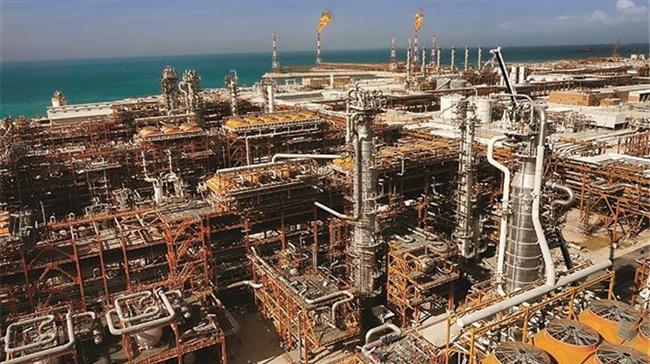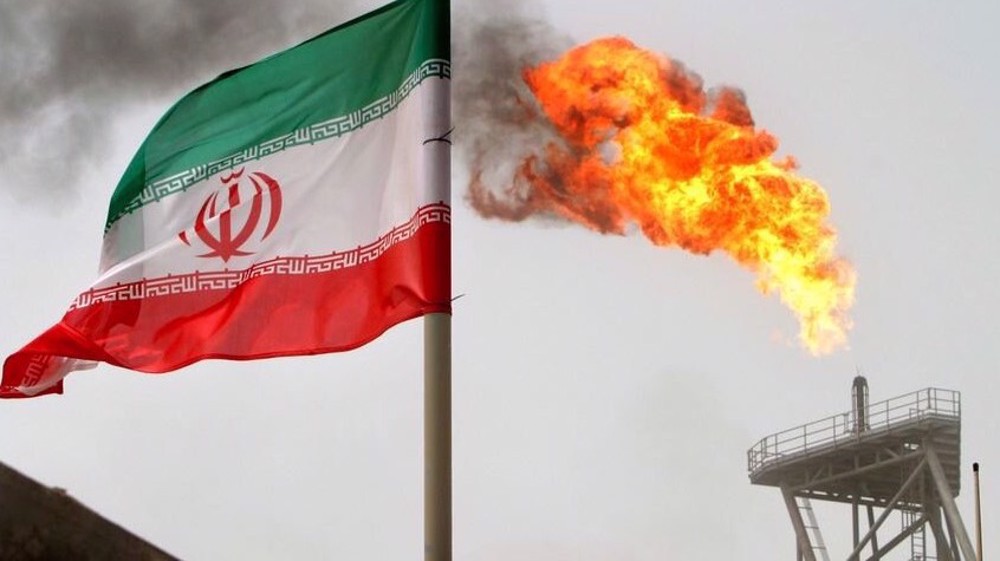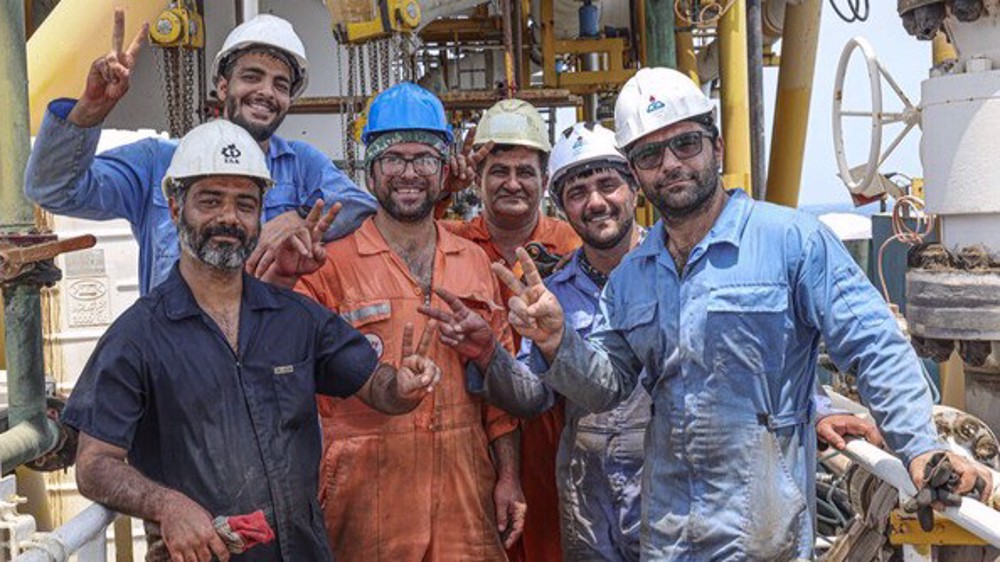Iran’s giant field reaches 650,000 bpd production plateau
Iran is currently producing 650,000 barrels per day of condensate from its giant South Pars gas field, which is mainly used in the Persian Gulf Star Refinery, a senior energy official says.
The rest of the gas produced at the world’s largest natural gas field, which Iran shares with Qatar in the Persian Gulf, is either used in petrochemical plants or exported, deputy Managing Director of South Pars Gas Company Hossein Shamshiri said on Tuesday.
The company is currently operating 12 refineries which process gas produced at the field, including two facilities at phases 11 and 12 which came online a month ago, he said.
“The onshore section of phase 14 is also being completed and will be operational soon,” Shamshiri said, explaining that the offshore section is already operational and the gas produced is used in other phases.
Iran exported much of its condensate to Asia, with South Korea and Japan being major customers, but US sanctions in 2018 led to a sharp decline in the exports.
The sudden halt meant Iran had to store large volumes of condensate in oil tankers, incurring high demurrage costs, but the country largely avoided the expense and disruption thanks to the operation of two major refineries in the country.
Minister of Petroleum Bijan Zangeneh has said all Iranian condensate exports will stop in the current Persian year that ends in March 2021. They will be processed in the Persian Gulf Star and Siraf condensate refineries to produce gasoline and naphtha.
On Saturday, official news agency IRNA said the Iranian government will sell parts of its shares at the Persian Gulf Star Oil Company.
Naphtha is a gasoline blending component and a feedstock for plastics and other petrochemical products. Asian customers favor Iran’s South Pars condensate for its rich naphtha yield compared to other grades.
South Korea was the biggest client of Iranian condensate with 300,000 barrels per day (bpd), but the country stopped the imports even before the US sanctions came into effect in November 2018. The United States is reportedly pushing its condensate and also naphtha on South Korea.
Before February, about 130,000 bpd of Iran’s gas condensate was used in its petrochemical plants, while another 80,000 bpd went to domestic condensate refineries not including the Persian Gulf Star.
The Persian Gulf Star Refinery currently receives 420,000 bpd of gas condensates. Its third phase was opened in February which made Iran self-sufficient in gasoline. The completion of the fourth phase will open another 60,000 bpd capacity for condensate feedstock.
Iran is building another refinery, the $2.8 billion Siraf plant, with a capacity to process 360,000 bpd of gas condensate. It includes six processing units, each with a capacity to turn 60,000 bpd of condensate into better value-added products.
The country expects its condensate production to hit 1 million bpd.
The launch of the Persian Gulf Star Refinery’s third phase in February also raised the overall gasoline production capacity to 105 million liters a day.
The construction of the Persian Gulf Star Refinery with 3.5 billion euros ($4.7 billion) of investment began in 2006 and the first phase came into operation in April 2017 and the second phase last June.
‘Trump authorized Epstein’s death’; ‘love for young girls’: Accusations infest new Epstein files
Libya’s army chief killed in Ankara plane crash after high-level talks with Turkish officials
Israeli settlers tear gas 3 Palestinian children in attack on West Bank home
‘He raped me’: New trove of Epstein files reveals why Trump tried to bury them
Iran halts gas exports to Iraq amid surge in domestic demand
Belgium files to intervene in South Africa’s ICJ genocide case against Israel
Netanyahu appears in court for 65th time in ongoing corruption trial
Iran's government submits $111bn budget bill for year 1405











 This makes it easy to access the Press TV website
This makes it easy to access the Press TV website